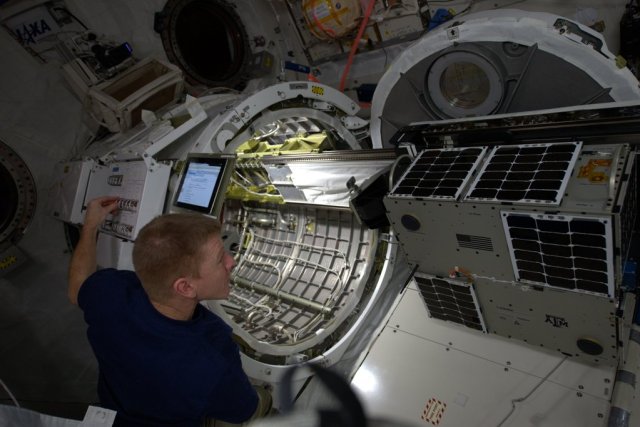UK astronaut Tim Peake KG5BVI preparing AggieSat4 for deployment
An example of the deployment mechanism can be seen below.
There are four switches, embedded on the CYCLOPS EAF, that inhibit AGS4 from turning. The first event that will occur after deployment will be the release of these inhibits. Once these inhibits are removed, the Electronic Power System (EPS) starts and initiates a 10 minute timer. After the timer ends the Command and Data Handling System starts and initiates a checkout of every system on AGS4. When complete, AGS4 will begin sending a signal to Earth with its Low Data Rate (LDR) radio, indicating that it is alive and well. The team expects to start receiving signals from AGS4 on Friday evening.
This animation shows how the Cyclops Deployment System launches satellites in the 50 to 100 kg class from the International Space Station.
Watch Animation of Station’s Cyclops Satellite Deployer
LONESTAR must be AggieSat4 and Bevo-2. AggieSat4 is mother satellite
and Bevo-2 is daughter. Bevo-2 deploy from AggieSat4. The satellites
deploy from ISS through Kibou's airlock via Cyclops. Preparation of
deployment will be done from 27th to 28th, and deploy at 29th.
According to IARU Amateur Satellite Frequency Coordination, both
satellite operate on amateur band.
AggieSat4
Texas A&M University
61x61x28 cm, 50kg
436.250MHz 9k6 FSK, 153k6 FSK
Bevo-2
University of Texas Texas Spacecraft Laboratory
3U CubeSat, 4kg
437.325MHz 38k4 FSK, CW









